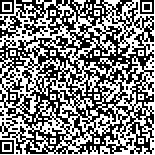|

二维码(扫一下试试看!) |
| Effect of FeSiAl Size on Static and Dynamic Magnetic Properties of Paper-based Composites |
| Received:February 08, 2022 |
| DOI:10.11980/j.issn.0254-508X.2022.05.004 |
| Key Words:FeSiAl particle size aramid fibers paper-based composites magnetic properties |
|
| Hits: 3021 |
| Download times: 2062 |
| Abstract:Paper-based composites (PBCs) were prepared by wet papermaking forming technology with FeSiAl sheets and aramid fibers. The effect of FeSiAl size on the static and dynamic magnetic properties of PBCs was discussed. The results showed that FeSiAl exhibited a unique layered arrangement structure due to the wet papermaking forming process and its high aspect ratio, resulting a significant magnetic anisotropy of PBCs, of which the obvious differences existed in in-plane and out-of-plane hysteresis loops. The results of the simulated impact method showed that with the increase of FeSiAl size, the coercivity of PBCs decreased and the complex permeability increased significantly. When the average particle size of FeSiAl increased from 14 μm to 116 μm, the coercivity of PBCs decreased from 3.47 Oe to 2.31 Oe, and the complex permeability changed from 13.55~9.01 j to 18.04~22.01 j (110 MHz). |
| View Full Text HTML View/Add Comment Download reader |